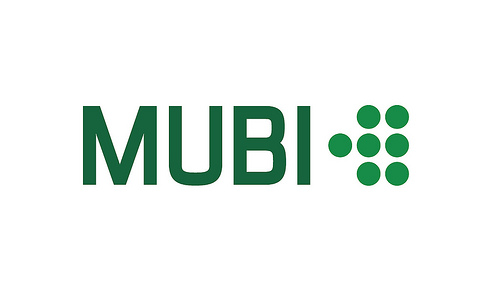“…Brave Enough…”: Change, or Lack Thereof, in Disney/Pixar’s BRAVE
29 June 2014
It took some time, and a bit of outspoken frustration from film audiences, but in 2012 Disney, in collaboration with Pixar, gave viewers a princess film in which the princess has… a relationship with her mother. And, not only does Merida, the princess in question, have a mother (Elinor) who plays an active role in the princess’s life, Merida and Elinor’s relationship is at the center of the film’s plot. This film is Brave…or is it?
In short, Brave takes place in the Scottish Highlands, following members of the royal Dunbroch clan. Princess Merida, the eldest child of King Fergus and Queen Elinor, defies the typical “princess” role with her fiercely independent, adventure-seeking, sporty (she loves archery) characteristics, not to mention her hearty appetite. But, when Merida learns her parents have invited men from allied clans to compete for her hand in marriage, Merida rebels. Feeling as though she is not ready to marry, and wanting to select her own partner, when the time eventually comes, Merida voices her concerns, only be countered by her mother, the queen, who insists the competition, called the Highland Games, are tradition and tradition must be upheld. The day of the Games, Merida selects archery as the contest to earn her hand and, after all the men shoot, Merida stands up, declares herself an eldest child, and shoots for her own hand, annihilating her competitors. Irate, Elinor drags Merida into the castle; Merida and Elinor argue, during which time Merida rips a tapestry Elinor made for her and Elinor throws Merida’s bow into the fire.
Devastated, Merida flees the castle, wandering through the woods and into and witch’s lair. There, she bargains with the witch for a spell that will change her mother. However, when she returns to her castle and puts the spell on her mother, the change that occurs is not what Merida hoped; it Elinor changes into a bear. Merida and Elinor, now a bear, leave the castle, seeking out the witch to reverse the spell. Unfortunately, the witch is gone, leaving a message for Merida: “mend the bond torn by pride.” Also, the witch warns Merida that if she cannot mend this bond by the second sunrise, this spell with be permanent. As Merida and Elinor try solving the witch’s riddle, tensions back at the castle build between the clans gathered to complete for Merida’s hand. With time running out before the second sunrise, Merida must care for her mother and settle the barbarism erupting within her kingdom, all the while trying to discover how to change her mother back into a human.
While it is certainly about time Disney broadened the horizon on relationships in a princess’s life—elaborating beyond relationships with a father and male love interest—the Merida/Elinor plot is problematic. The basic problems erupting as a result of Merida and Elinor’s story are these: 1) Merida declares she does not want to become like her traditional mother, yet she subtly does, and 2) Merida’s independence leads her on a quest for change in tradition, yet she spends most of the film trying to undo the “change” she made happen, metaphorically revoking her brave, independent defiance of tradition.
To approach the first problem, Elinor’s characteristics are worth mentioning. She is a devoted caregiver, peacekeeper (particularly of men), and respecter of traditions. Conversely, Merida does not display any of these attributes. Merida feeds her small brothers sweets instead of encouraging them to eat their more nutritious meal. Evident by the mockery she makes of the Highland Games set up to win her hand, she is no diplomat or peacekeeper, often riling up situations as opposed to calming them. And, lastly, she defies tradition, wanting to change tradition, even though custom dictates the winner of a competition wins her hand in marriage as prize.
However, after Elinor changes into a bear, Merida’s characterization undergoes a drastic transformation; Merida becomes like Elinor, suggesting the real change is not with Elinor, but with Merida. Take, for example, when Merida builds the shelter in the woods to keep the rain off her mother, now a bear. Or, when Merida teaches Elinor how to fish and feed herself. Surprisingly, the cookie-eating, flighty young princess has, overnight, transformed into a caregiver.
Also, when Merida returns to her castle to repair the rip she tore in the tapestry, which she hopes will “mend the tear torn by pride,” she sees chaos in the castle; her father and all the clansmen are fighting, violently, with one another. Like her mother, Merida instinctually transforms into a peacekeeper. Taking the cue from Elinor, Merida talks, calmly and persuasively, to the men, reminding them of their alliances and encouraging them to cease fighting; as Elinor’s husband always listens to her, the men listen to Merida.
And, by the end of the film, Merida does repair the tapestry, apologizes to her mother for the spell, and reaffirms her love to Elinor by the second sunrise. Shortly after, the audience sees Merida and Elinor creating a new tapestry together. Symbolically, repairing the tapestry and creating a new tapestry with her mother suggests Merida’s new-found respect for tradition. The art of tapestry weaving is a tradition (perhaps not the most common artistic tradition in Scotland, but a tradition all the same).
The second problem in Brave, which plays out through Merida and Elinor’s story, is that Merida spends the beginning of the film demanding change—a necessary and timely demand—but then spends the majority of the film trying to undo the change she makes happen. Merida was wise to see that her mother’s compliance with tradition only perpetuates the princess problem: when a princess is voicelessly and submissively pushed on to an all-powerful man. Merida was also wise to actively seek change. However, as soon as change occurs, Merida gives up her independence and spends the rest of the film reversing the change. Frighteningly, this reversal, according to the film, is what is brave.
Reading into the film, the message Brave actually communicates to audiences is: changing tradition is bad. Changing tradition may mean hurting a loved one and tearing a family apart. Changing tradition is so bad, in fact, that Merida, the young princess who once saw the need for a change in tradition, so she could leave a life of her own choosing, must undo the change and apologize for causing change. In the film’s conclusion, Merida never gets her bow back, (as mentioned) she works on a new tapestry with her mother—demonstrating her respect for tradition—and she is last seen riding in the Scottish Highlands with her mother. What happened to the independent young woman from the film’s opening who rode on her own? That girl is gone. According the message communicated throughout the film, Merida learned the danger and heartache in defiance and is now willing to sacrifice her independence, staying close to her mother’s side, for the traditional, unchanged life.
In the end, Brave is not so…well…brave. In fact, calling for change only to reverse the change is actually rather cowardly. At the start of the film, Merida is independent and forward-thinking, but the film does a beautiful job of transforming her into her mother. Tragically, Merida has the power to change antiquated ways, yet does not.

















